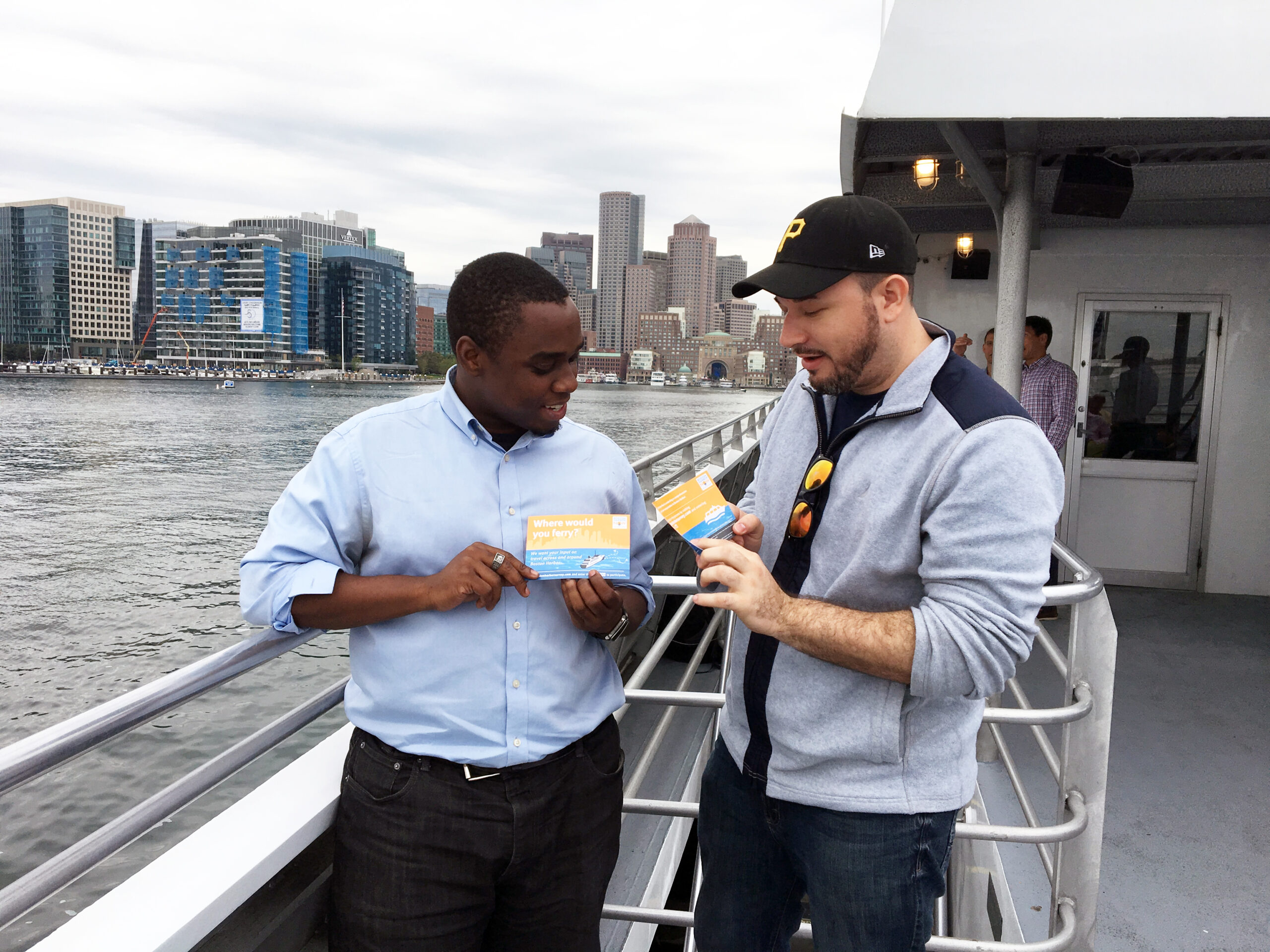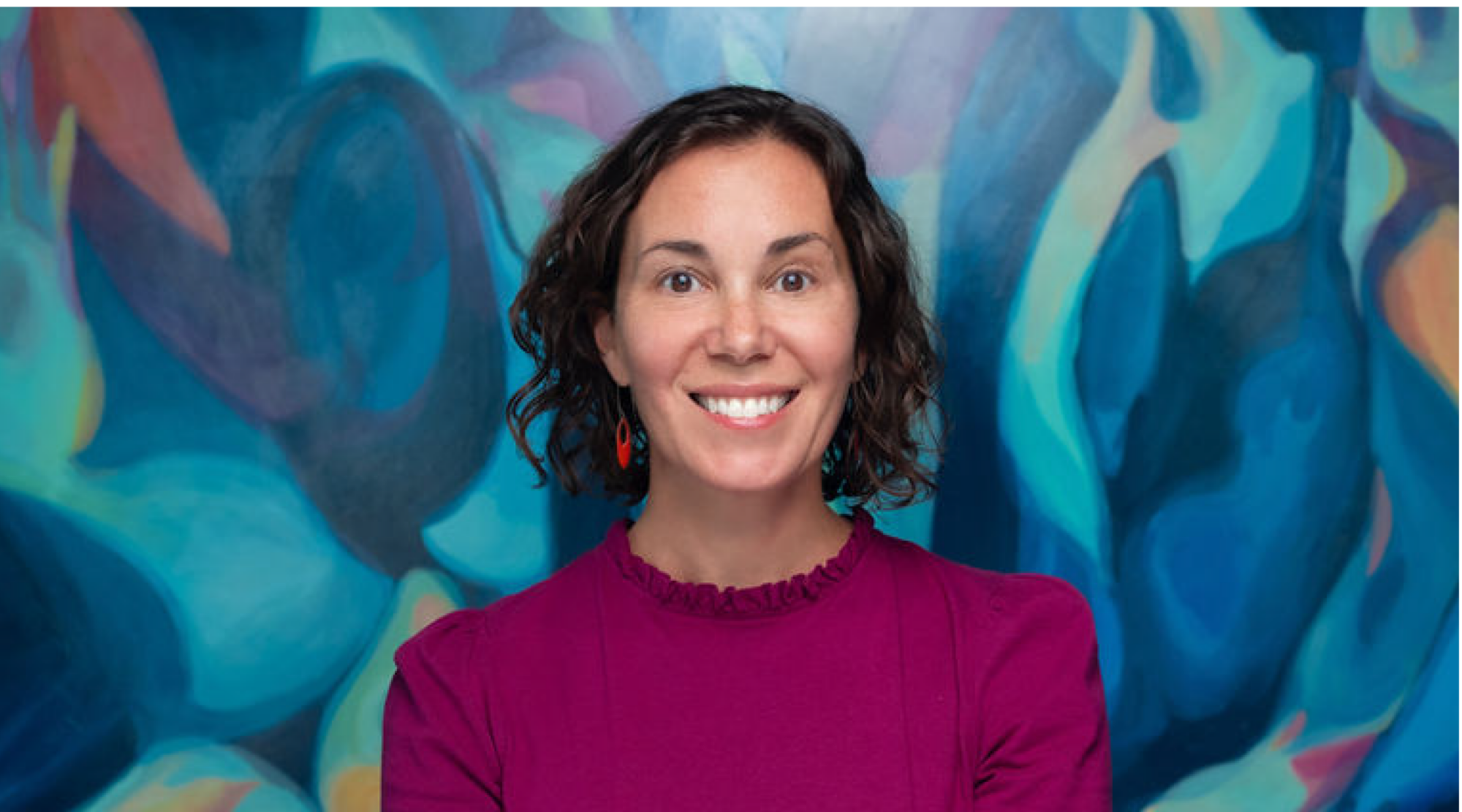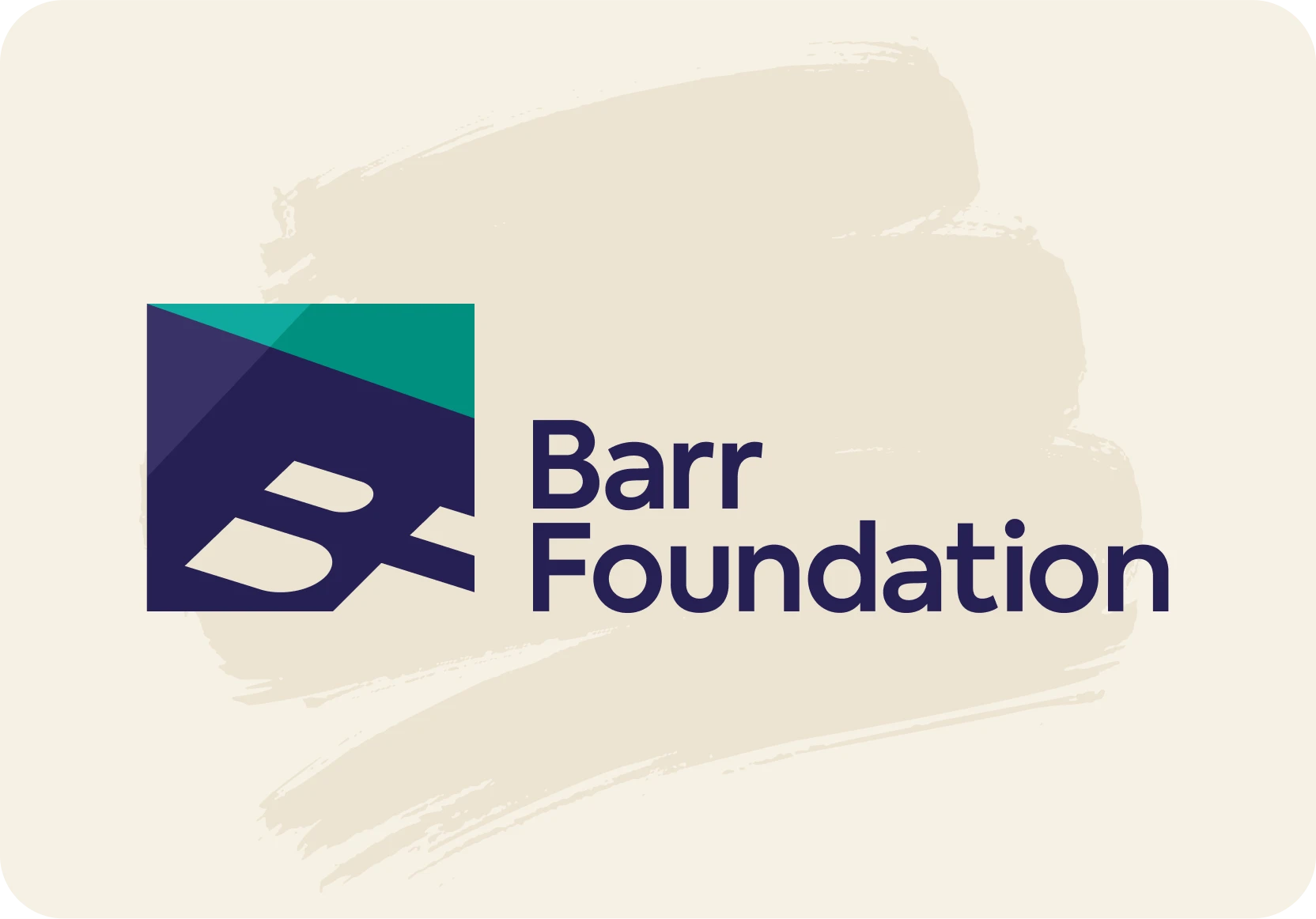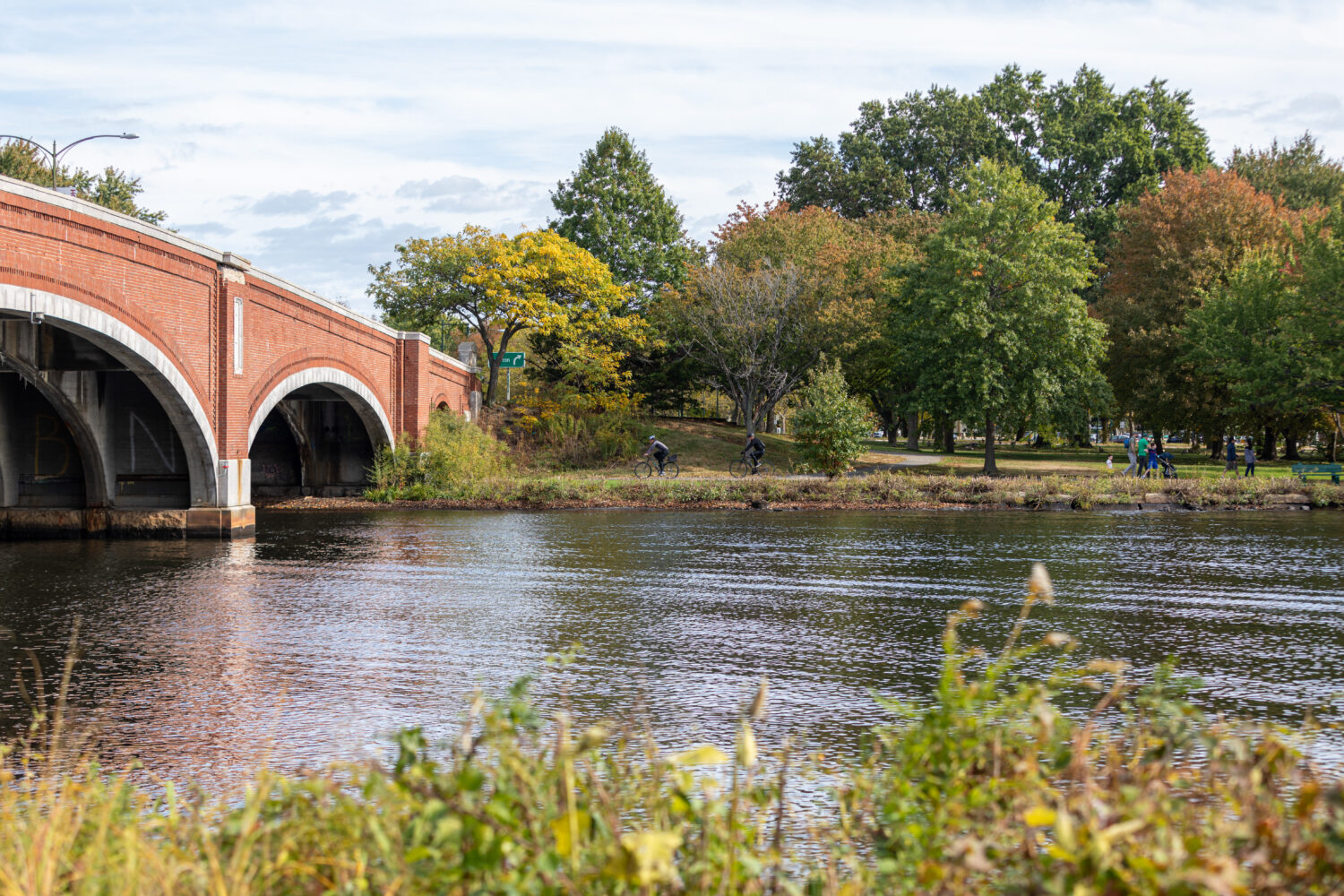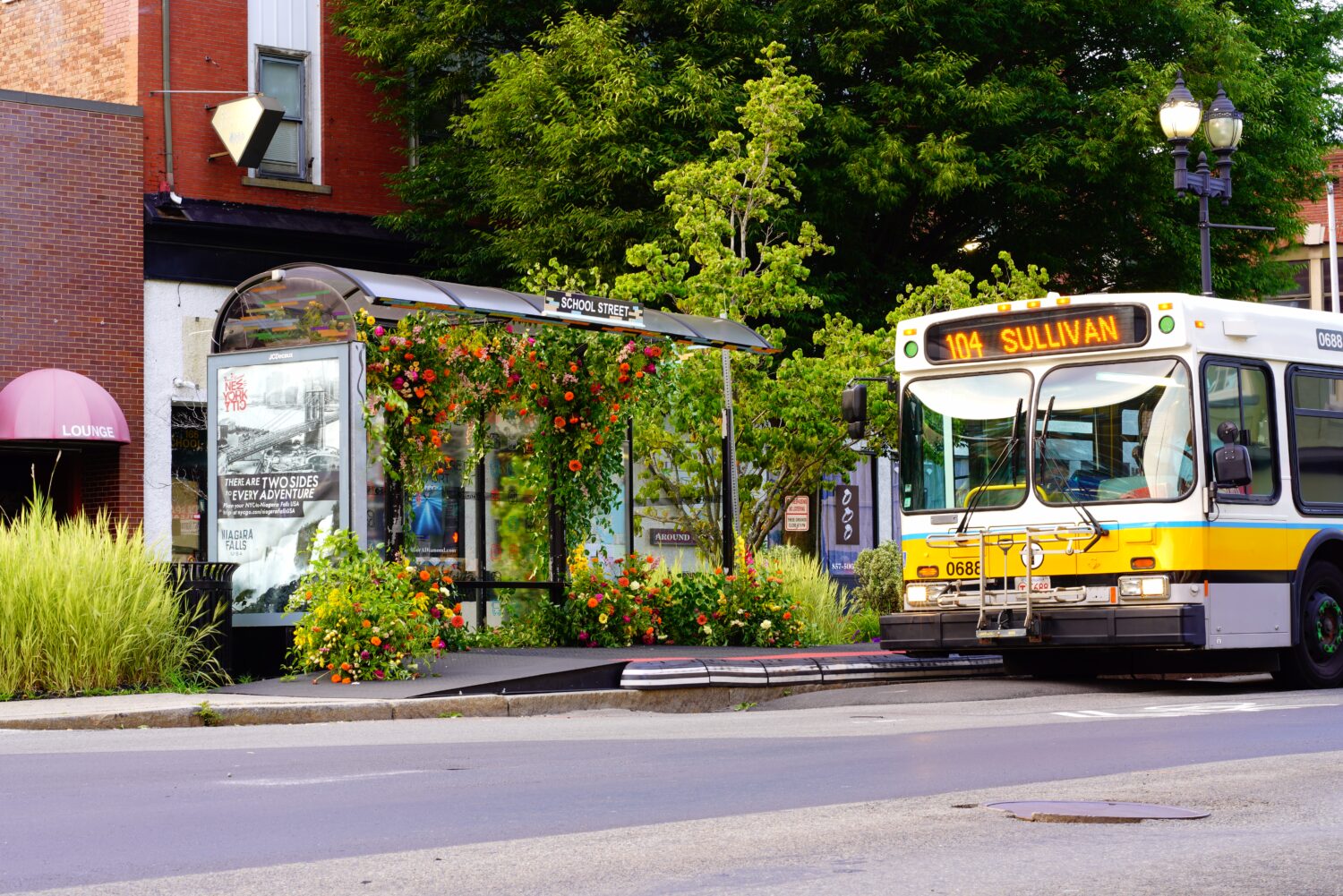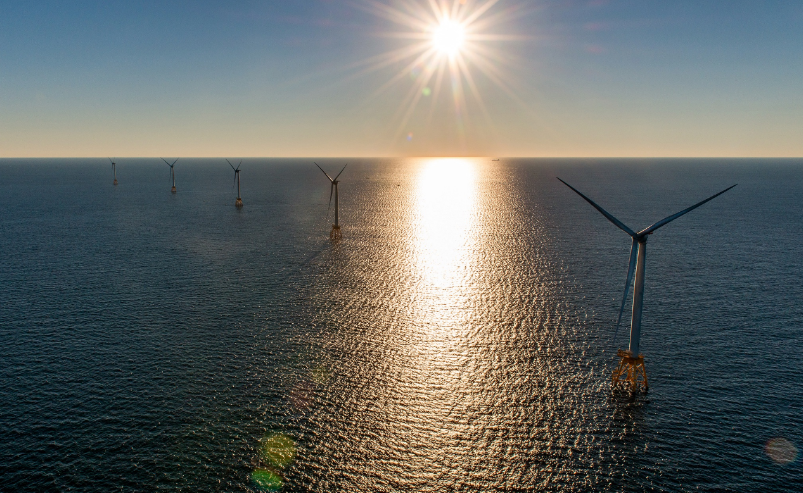Fully leveraging Boston’s Harbor could mean less congestion on our roadways and more options for public transit. That is why Barr is excited to partner with Boston Harbor Now and several other stakeholders to study the potential of expanded water transportation in Greater Boston. Three months into the effort, I caught up with project manager Alice Brown to learn more:
What prompted this study, and what are its goals?
Right now, there are three MBTA routes and three other commuter ferry routes operating in the Boston Harbor. But, a lot of people don’t know these ferry routes exist or that water is a great way to get around the Boston region. At the same time, there many people excited about expanding water transportation now that there is ongoing development on the waterfront. So, what we hope to accomplish with the Water Transportation Study is to not only build on existing service with new routes, but to build awareness of existing service. We hope the study results in increased ridership for existing routes and detailed business plans for adding one to three new ferry routes over the next five years.
Before coming to Boston Harbor Now, you helped the City of Boston facilitate Go Boston 2030, a vision and action plan for Boston’s transportation future. Water transportation was a piece of that. So, why do we need another plan?
Different plans operate at different scales. Go Boston 2030 was an incredible project to work on: it was multi-modal, it addressed mobility concerns from every single neighborhood in Boston, and it proposed solutions at a local, cross-town, and regional level. But, proposing a new ferry route is not the same thing as mapping out the implementation of that route. Through this process, we are really looking at where there is enough demand from current and potential riders, and where community, business, civic, and political leaders are most ready to work together on bringing new routes to implementation.
Hearing from everyday people was a core tenet of the Go Boston 2030 process. How is this a piece of the Water Transportation Study?
Very often in community engagement processes, there are loud voices that you hear from again and again. But, we also want to hear from people who might not normally spend their time thinking about water transportation. So, we’re reaching out in many ways to hear from the broader community. That community includes existing ferry riders, potential ferry riders, and people who have taken a ferry before (such as to the Harbor Islands), but have not thought of it as a commuting option. To reach this constituency, we’re riding ferries and talking with people during their commutes, we’re emailing them, tweeting about the study, and posting flyers in parks, on docks, and in key harbor locations. We want to connect with people in a way that’s convenient for them.
So far, what’s the biggest difference between transportation planning on the water compared to land?
The tradeoffs are not as easy to visualize for water transportation. People understand there is very limited space on our streets and more space for one mode of transportation most likely means less space for other modes. But, when people look out at the ocean they assume it is a blank slate and there is space for an unlimited number of vehicles. In reality, water has its own set of infrastructure challenges. To even get on the water, you need to have a high-quality dock, ramp facilities that are ADA accessible, Coast Guard compliance, and vehicles that can withstand the various weather conditions that we have in Boston Harbor. Tough choices have to be made when planning for water, but the tradeoffs are not as clear cut as lanes on a road.
What advice would you offer others who are leading a planning process?
Right away, get clear about the question that you’re trying to answer. I spent eight years as a teacher before I became an urban planner and I practice what teachers call “backwards planning.” I think about the end goal and then work backwards to identify the steps I need to take and the input I need to get to that end point. So, for this planning process, the first big step is gathering enough input to answer the question: “What would make someone a pick a ferry?”
You seem to have really taken to your new role as evidenced by your Twitter handle, @ferryfaerie. What is it about ferries that gets you so excited?
I don’t think it’s any surprise for someone who has taken a boat that it’s the most popular transit service from a passenger satisfaction perspective. It’s incredible to be out on the harbor where there is so much beauty and history surrounding you. I appreciate the experience even more knowing that just 30 years ago, the water would have offered a much different experience, being not nearly as enjoyable or beautiful as it is today.
What was your favorite ferry experience this summer?
One of my favorite side projects this summer has been organizing a series of boat-bike trips so that people can experience both the boats as well some of the amazing places they will take you. There are great parks and paths and accompanying adventures accessible from each of the existing ferry routes in Greater Boston.
Can people still share their ideas? And, if so, how?
The survey is open until Friday, September 22 and can be found at bostonharborsurvey.com. I encourage everyone to visit that site, enter the code “BHN,” and take five minutes to tell us how they make travel choices and what draws them to the harbor. There is also additional background information about the water transportation study on Boston Harbor Now’s website.
After the survey closes, what’s next?
I’m really excited to look at the survey data to understand where people are in support of an expanded ferry service.In Go Boston 2030, we used a lot of really large data sets but we weren’t asking the kinds of questions that allowed us to build statistical models about how people in the region make transportation choices. I’m excited to see how we can leverage this survey data to inform ferry service.
(Enter code: BHN)
